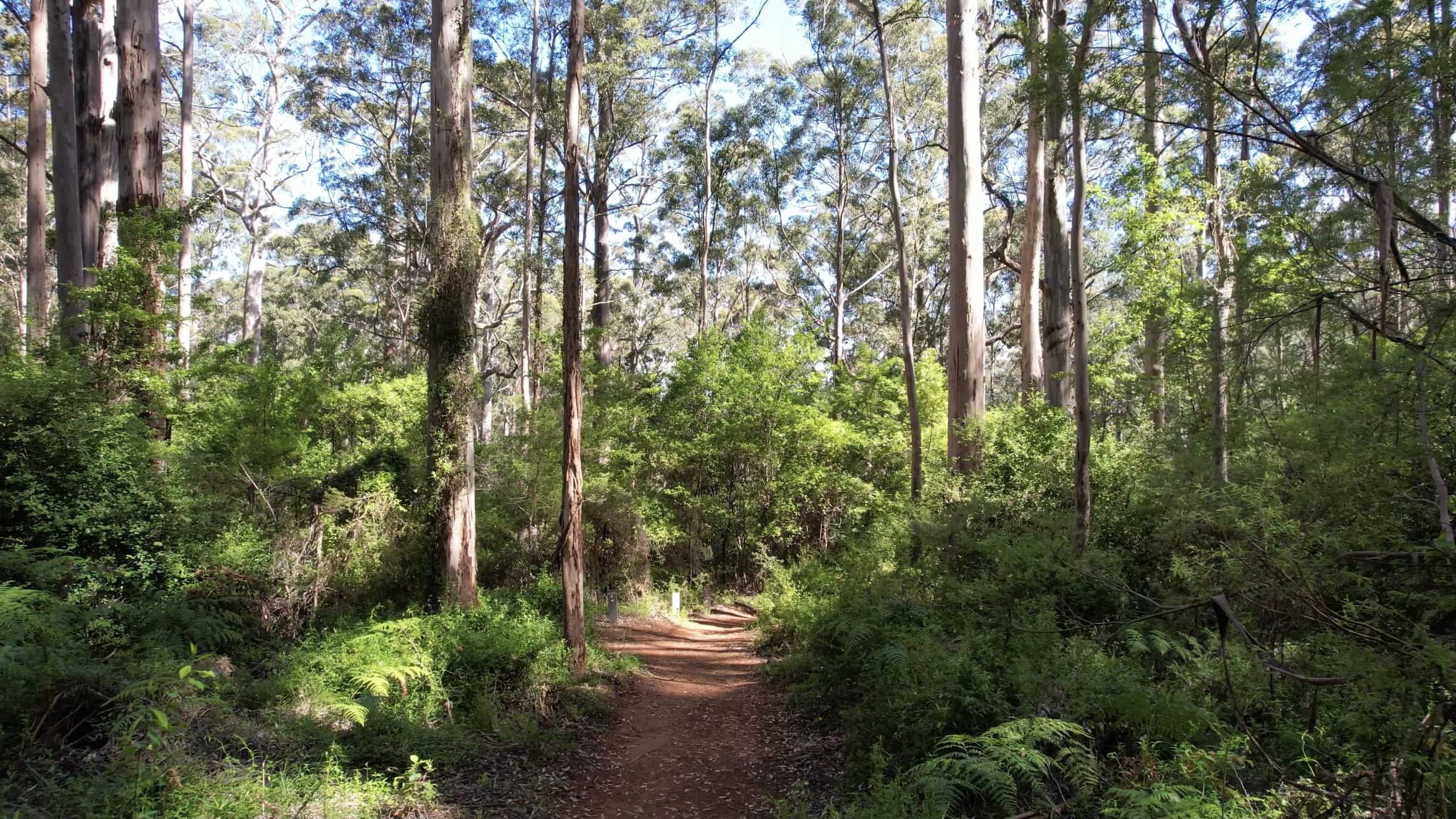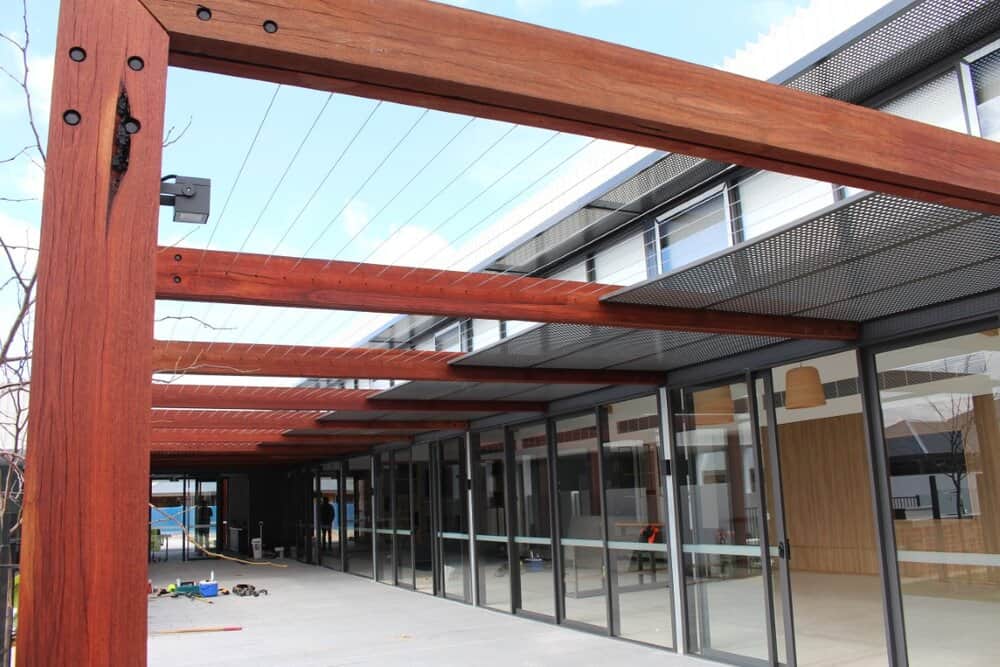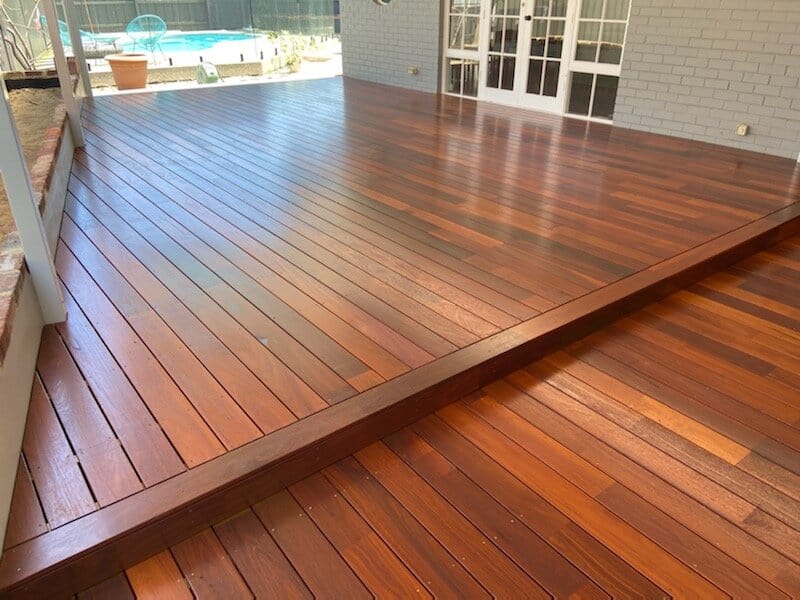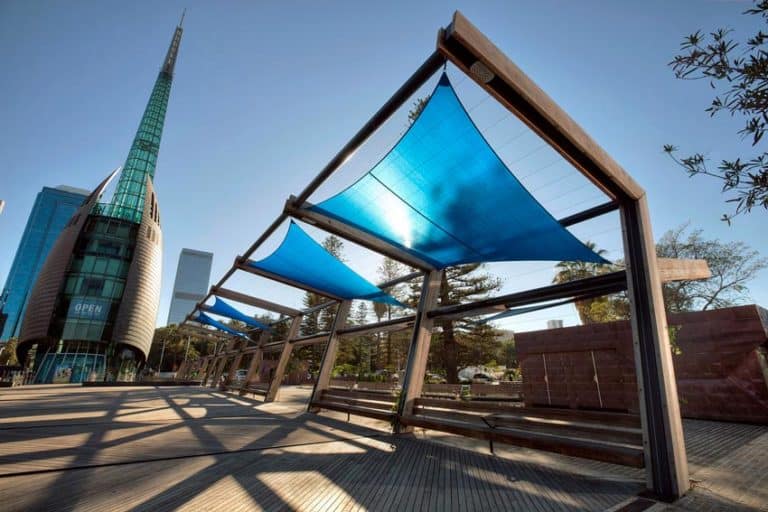Karri timber is a popular Australian hardwood that grows only in Western Australia’s southwest. It is highly regarded for its strength, durability and consistent colour – making it a good option for outdoor decking, furniture, framing and roofing. Some builders like using Karri timber because it can be cut into long, even lengths. However, it is one of the heavier Australian timbers and, due to its hardness, is often difficult to work with.
So, is Karri timber a viable choice for your next building project? Keep reading, we’ve put together the pros and cons of using Karri timber to help you decide.
What is unique about Karri timber?

Karri timber has many unique physical features. One of the most recognisable is its rich colour. It can range from pale pink to reddish brown and often does not include any knots. Some people like Karri’s uniform colour while others may argue that the timber lacks character. The absence of large knots means the wood can be cut into larger lengths.
Karri is a heavy, strong timber. While its hardness may make it hard to cut or drill, it is extremely hard-wearing. However, be careful where you install your Karri timber as it can be prone to termite attack.
Along with Marri and Jarrah, Karri timber is native to Western Australia’s southwest. The Karri tree is slow growing and is one of Australia’s tallest hardwood trees. The WA Government’s Forest Product Commission developed the Karri forest management plan to maintain a sustainable level of timber to use for residential and commercial projects. However, in 2021 the Western Australian Government announced a ban on the logging of Karri timber from native forests. This ban is proposed to take effect in December 2023 and has already put a strain on local Karri timber supplies. This has prompted builders to look for alternatives to Karri timber.
What timbers are similar to Karri?

In terms of strength and durability, Jarrah is a suitable alternative to Karri timber. Jarrah is also native to Western Australia’s southwest and is also one of the local timbers that will be banned from logging in native forests. Unlike Karri, Jarrah is quite easy to work with and features an even textured grain. Its colour is also striking and includes unique character features. The rich colour of Jarrah feels natural outdoors and blends in well with any environment.

Spotted Gum is another Australian timber that has light brown and dark red colouring, which can be similar to some Karri wood. It is also hard-wearing and naturally durable. Spotted Gum does feature knots which can add character to your outdoor project, but it may mean that the board lengths are cut smaller.
If you haven’t found the right timber colour for your home or commercial project, browse through the full range of timbers available.
Should you use Karri Timber for your next project?

To help you make an informed decision about using Karri timber, here are some of the pros and cons. As we mentioned above, supplies of Karri timber can be limited and you will need to pre-order. Due to its hardness, Karri is often used for heavy engineering projects including roofing and framing.
| Pros | Cons |
|---|---|
| Native WA timber | Heavy timber |
| Durable & hard wearing | Difficult to work with |
| Can be cut into longer lengths | Not termite resistant |
| Can be used for structural projects | Supplied unseasoned |
| Naturally beautiful colour | May require pre-drilling |
| Cheaper than other hardwoods | Needs to be pre-ordered |
If you’re thinking about using Karri timber for your next project or looking for an alternative to Karri timber, contact the team at Austim first. We’re Perth’s leading timber supplier and can recommend the best timber to suit your project and budget.


































